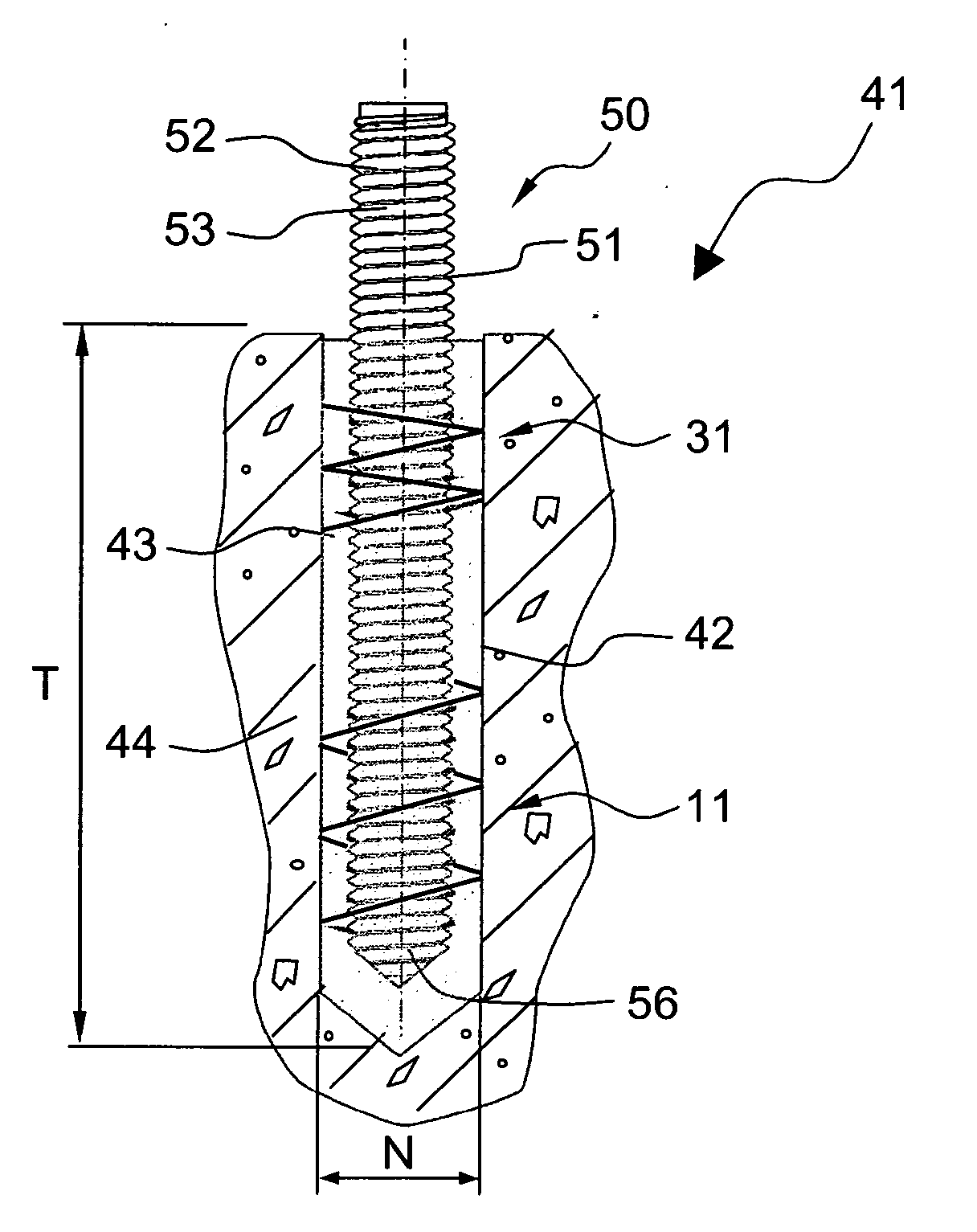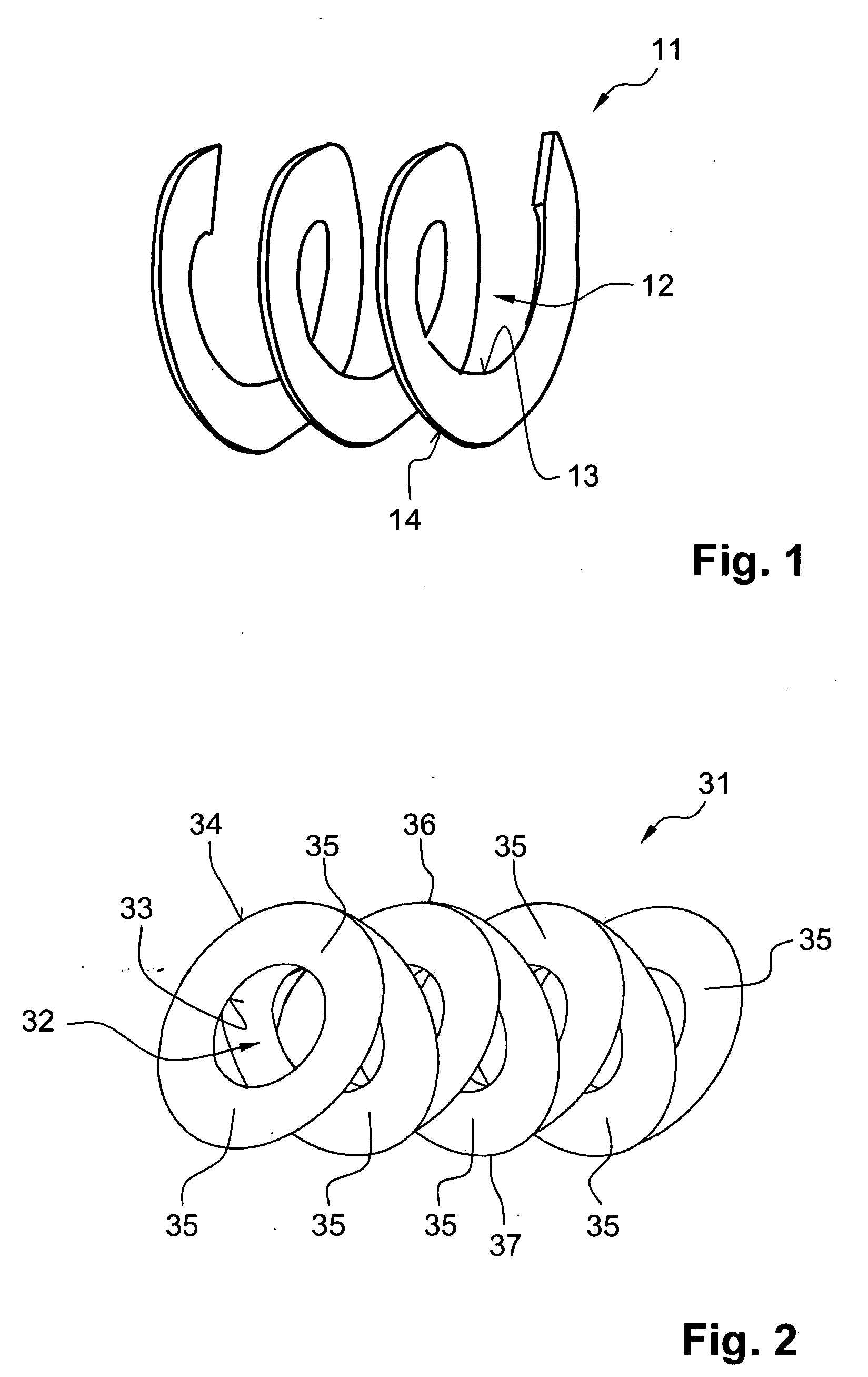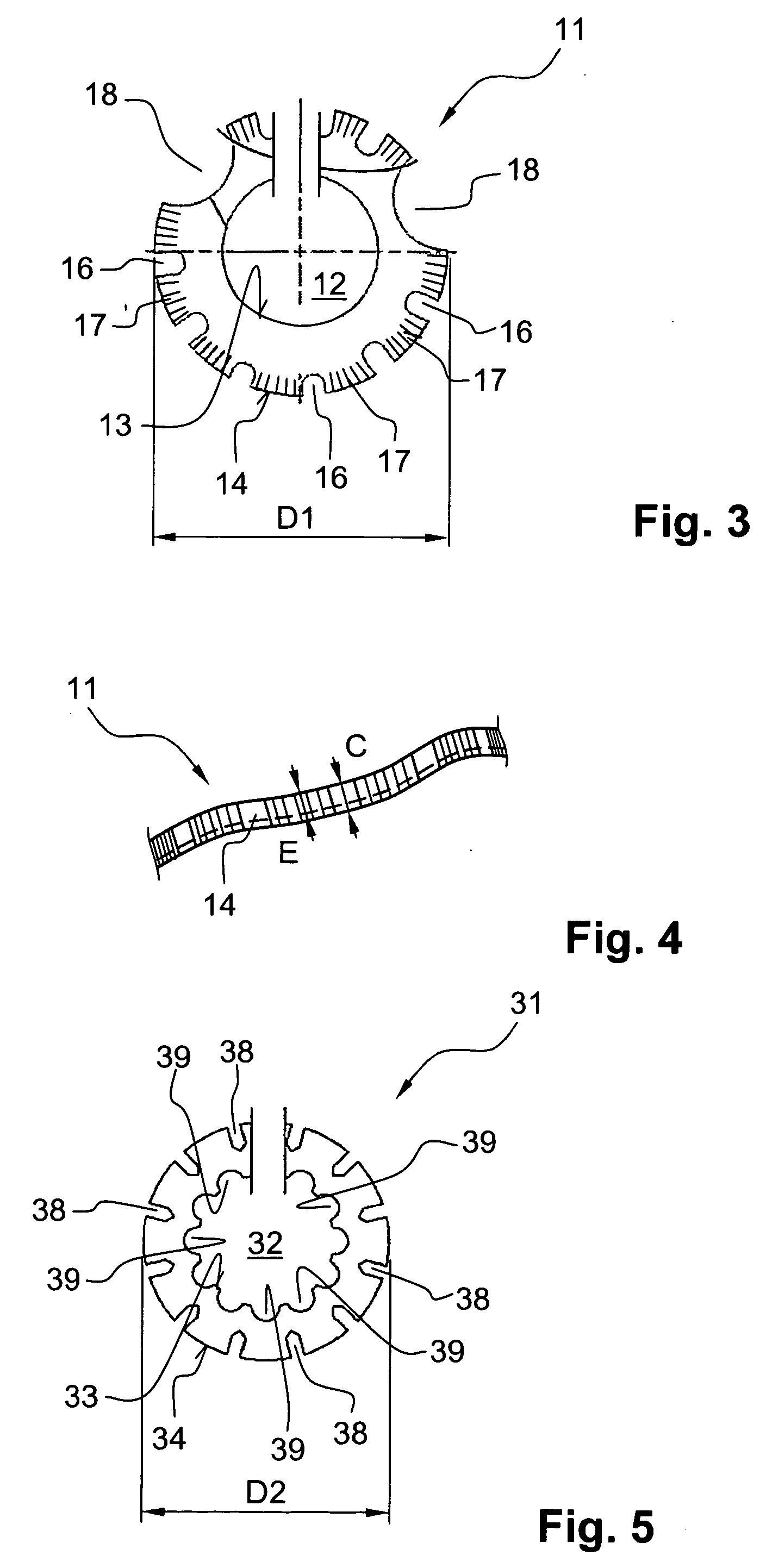Anchoring Element
a technology of anchoring elements and screws, applied in the direction of fastening means, screws, dowels, etc., can solve the problems of high cost, high cost, and the inability to clean the borehole, and achieve the effect of accelerating the setting of the fastening assembly and increasing the reliability
- Summary
- Abstract
- Description
- Claims
- Application Information
AI Technical Summary
Benefits of technology
Problems solved by technology
Method used
Image
Examples
Embodiment Construction
[0066]A helices-shaped anchoring element 11 according to the present invention, which is shown in FIG. 1, is formed of a strip and has a through-opening 12 for a shaft of a fastening element. The helix-shaped anchoring element 11 extends over an angular region of more than 360°. In the embodiment shown in FIG. 1, the anchoring element 11 extends thrice around the opening 12, which corresponds to an angular region of 1080°. The multiple of 360° that defines the extent of the strip-shaped anchoring element 11 need not be a whole number. E.g., if the strip extends over an angular region of 480°, it would extend 1.3 times around the through-opening 12. The anchoring element 11 can be easily adapted to site condition or different loads, e.g., by being cut to a length.
[0067]The anchoring element 11 has an inner edge 13 adjacent to the through-opening 12, and an outer edge 14 remote from the through-opening 12. The anchoring element 11 is formed of metal, preferably, sheet steel, by a stam...
PUM
 Login to View More
Login to View More Abstract
Description
Claims
Application Information
 Login to View More
Login to View More - R&D
- Intellectual Property
- Life Sciences
- Materials
- Tech Scout
- Unparalleled Data Quality
- Higher Quality Content
- 60% Fewer Hallucinations
Browse by: Latest US Patents, China's latest patents, Technical Efficacy Thesaurus, Application Domain, Technology Topic, Popular Technical Reports.
© 2025 PatSnap. All rights reserved.Legal|Privacy policy|Modern Slavery Act Transparency Statement|Sitemap|About US| Contact US: help@patsnap.com



